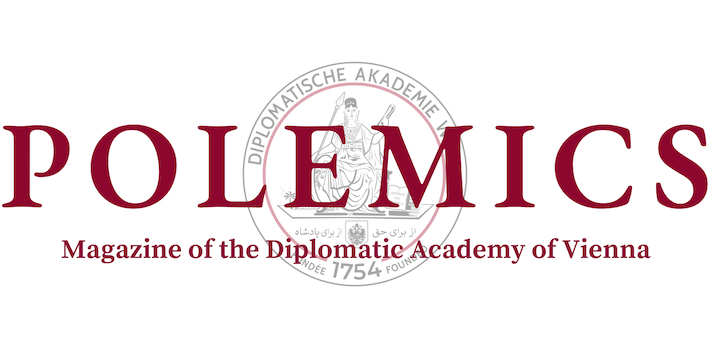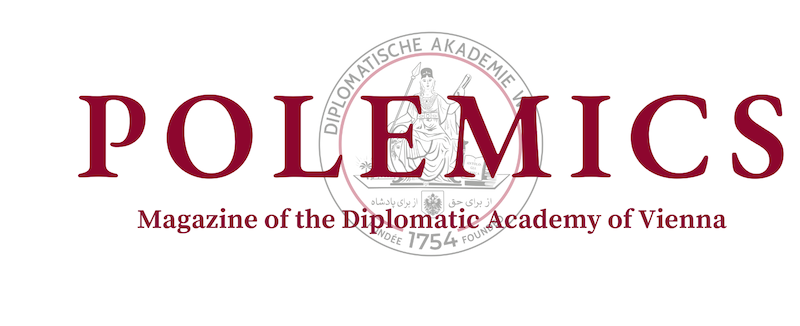The world order as we have known it since the end of the Cold War thirty-five years ago has ceased to exist. Instead of sustaining this “rules-based order”, in today’s multi-polar world, geopolitics has resurged, with countries increasingly prioritising their national interests. International organisations such as the United Nations, once arbiters of peace and multilateral cooperation, have proven ineffective at upholding their own rules. This development in global affairs has left Europe constrained with its current values-based policy approach, leading to the continent playing an ever less important role in international relations as vividly illustrated by its exclusion from the United States’ peace talks on Ukraine.
Moreover, the progressing rift in transatlantic relations, caused by the policies of the current Trump administration, has revealed Europe’s overt dependence on US security and limited agency in formulating independent policy. This situation, however, does not solely showcase Europe’s weaknesses, but should also lead to a critical reassessment of the past, present and future of its relationship with the United States.
The type of transatlantic bond in which the United States leads, and Europe follows, often mirroring American geopolitical and economic strategies, is detrimental to its own interests and undermines its influence in world affairs. At times, major European leaders even defied US policy decisions, such as criticising the American invasion of Iraq in 2003 or its promise to expand membership in the North Atlantic Treaty Organization to Georgia and Ukraine at the 2008 NATO summit in Bucharest. However, in most cases, Europe reverted to alignment with Washington’s initiatives. Therefore, the ongoing rupture could be perceived as an opportunity for Europe to formulate European strategic interests and pursue policies independently from the United States tailored to its own demands and needs. This would not constitute a complete cut of transatlantic relations but rather a transition from automatic alignment to a pragmatic, case-by-case approach: cooperating when possible and maintaining autonomy when necessary. Such a transformation would mean that NATO no longer serves as an extended lever of American interests but as a European means for European objectives.
A quick glance at the recent history of American foreign policy reveals the divergent nature of US and European strategic interests, demonstrating that such a proposal is more than justified. While the US has consistently expanded its power and influence, Europe has had to disproportionately shoulder the costs. This holds true from the illegal NATO bombing of Serbia during the Kosovo War in 1999 and the US-led military intervention in the Arab Spring in the early 2010s to today’s demands to decouple from China. While the US was able to set foot in a traditional Russian sphere of influence in the Balkans during the Kosovo War, Europe struggles to this day with the political and institutional integration of the Western Balkans due to the troubled relations between Serbia and Kosovo. Similarly, although the United States succeeded in removing hostile Arab heads of state from power, it profoundly destabilised an entire region with mass migration to Europe as a consequence.
While the war in Ukraine serves short-term US national interests through increased energy exports and arms sales to Europe and Ukraine, it has imposed heavy costs on the continent. Europe must deal with rising energy costs, a sanction regime that leads to the stagnation of its national economies and the inflow of millions of Ukrainian refugees. Similarly, while an economic decoupling from China would undoubtedly hurt the US economy, the repercussions for Europe would be far more severe due to its greater dependence on Chinese export markets.
In an increasingly multi-polar world, overreliance on one strategic link is insufficient. By doing so, Europe risks missing out on valuable opportunities of global cooperation. A more advantageous approach would be a strategy of multi-connectivity defined by the diversification of international partnerships and active engagement with multiple global powers to maximise strategic flexibility. Such a strategy could support European interests more effectively than rigidly sticking to transatlantic relations.
What could this strategy of multi-connectivity look like in practice, and what role would transatlantic relations play in it? One key element could be for Europe to maintain its military alliance with the US via NATO while simultaneously strengthening its own defensive capacities under a European wing within the alliance. Another feature might involve selectively engaging in economic and diplomatic partnerships, guided primarily by European economic and geopolitical interests rather than American geopolitical objectives or ideological alignment. In the economic sphere, this could mean maintaining or even deepening ties with China instead of severing them via tariffs on Chinese products or pursuing a strategy of “de-risking” to better safeguard European economic stability and long-term prosperity.
To stay relevant in international relations, Europe must come to terms with two essential realities: First, it must stop automatically following US foreign policy, a pattern that not only hinders the formulation of its own strategic interests but also diminishes Europe’s ability to respond effectively to global challenges. Second, an increasingly multi-polar world requires an increasingly multi-connected Europe: one that independently pursues its own interests through diversified global partnerships, rather than serving merely as an extension of US foreign policy interests.
The European Union must choose: will it become a sovereign pole in a multi-polar world, or remain a second-rate power in a world defined by bloc politics? Ultimately, the EU must decide whether or not to step out of America’s shadow before it loses control over its own destiny.
Written by Leo Hirnschrodt.
Edited by Katja Palaszewski.
Photo credit: “Blue flag on top of building during daytime”, by Christian Lue, December 24, 2020 (Unsplash);









